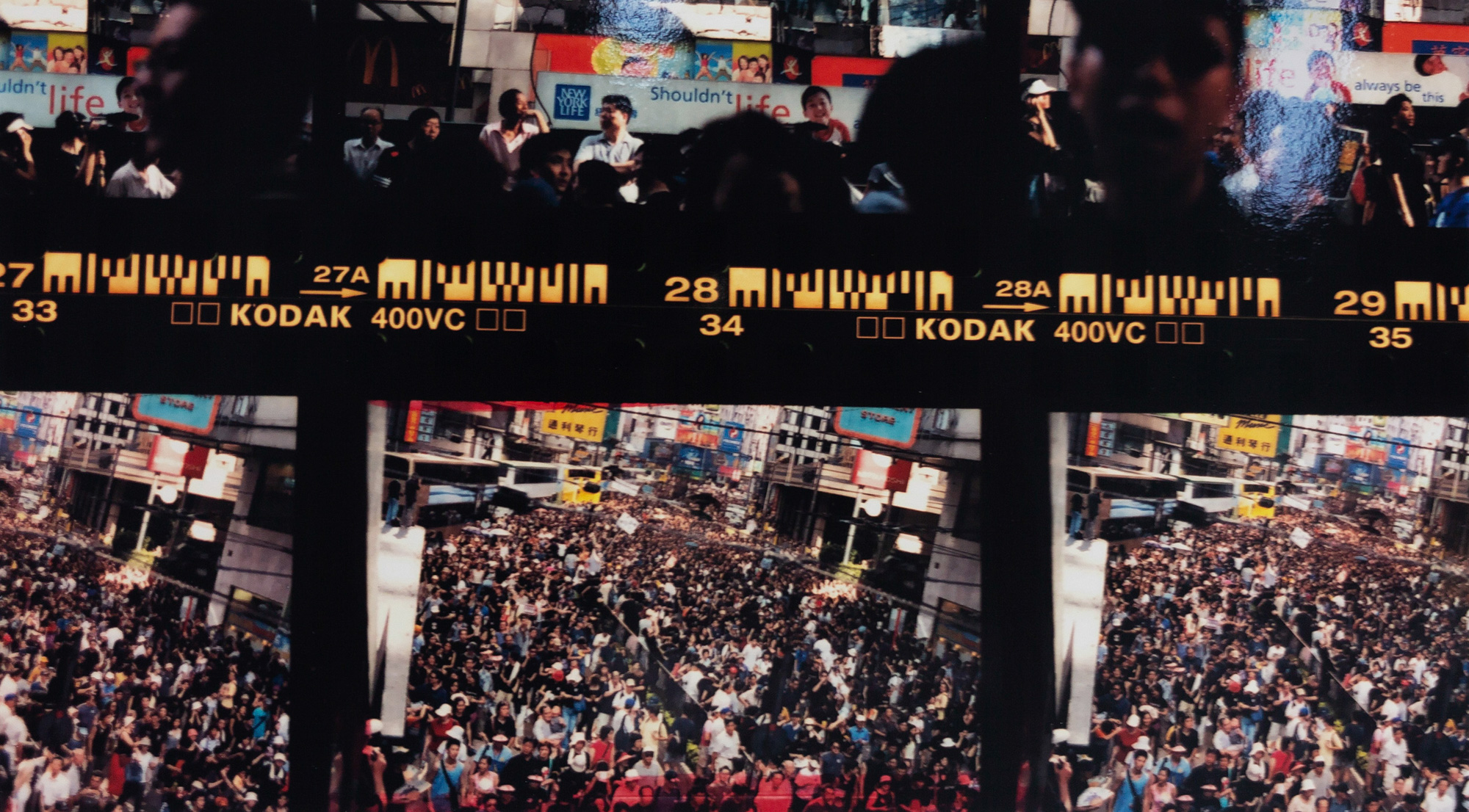Shows
Wei Leng Tay’s “Abridge”


After almost two decades of practicing professional photography in Hong Kong, Wei Leng Tay has cultivated a rich archive of imagery capturing her encounters with those who had migrated from Southern China to Hong Kong between the 1960s to 2000s. As Tay’s shooting process was slowed by the pandemic, she turned back to this corpus of imagery she had created and found a strange resonance between the migrants’ lives and broader feelings of displacement, uncertainty, and fragmented identity spurred on by Covid-19 and global sociopolitical unrest. Curated by Olivier Krischer, Tay’s solo exhibition at Sydney’s Verge Gallery, “Abridge,” recycles and resamples these images to produce a visual lexicon that is at once familiar and distant, traversing the boundaries between past and present.
The central collection of photographs consists of several distorted and multi-layered photographic prints that seem to buffer in and out of focus. In three images of Hong Kong's Article 23 protests in 2003, Tay creates an incoherent mass of distorted figures and shapes through re-photographing 35 mm slides and contact sheets with her mobile phone. The manipulated scenes from Hong Kong’s large-scale protest against a proposed anti-subversion bill—which criminalized “seditious” speech and granted sweeping powers to police—pose as fragments of the former British colony’s complex history with mainland China. This is translated through “our familiarity with the present,” whereby echoes of Hong Kong’s mass pro-democracy demonstrations in 2019–20 and the ongoing crackdown by the government under the recently enacted National Security Law reverberate throughout the images. Tay’s conversations about contemporary audiences reading history through their imminence is further orchestrated through her highly translucent and reflective surfaces, as seen in Grocery store, Tung Lo Wan Road, date unknown. Kodak E100VS slide film, 120mm and Causeway Bay, 2001. Contact sheet, Kodak Tri-X 400 negative film, 120mm (both 2020), whereby the unfocused vibrant reds, deep purples, and liquid silvers cast a glossy ripple of shapes. The viewer sees parts of their reflection within these mirror-like sections, becoming part of Tay’s stories. Yet they nevertheless remain outsiders, not participants in the frame—a dynamic that references Tay’s own internal conflicts of identity. As she stated in an interview: “In terms of thinking about Hong Kong politics, I feel like I am an outsider . . . Even though I’d lived there for 15–16 years, I was never a heunggongyan [Hong Kong person].”

Tay directly explores the 2019 Hong Kong protests in Live streaming, Prince Edward, 12/11/2019, 23:35:05-6. 25 frames per second, 1920x1080 (2019). Hung in a straight line at the rear of the gallery, these 25 frames taken in one second show a cluttered living room with a lit television in the center of the composition, surrounded by the haphazard accumulation of everyday objects. The television in each image displays in turn a single moment in the live coverage of the protests, which Tay watched unfold from her living room. The multilayering in this series, the placing of a frame within another frame, speaks to the way in which we document and consume events today: through our screens.

The show’s centerpiece was Tay’s looped, 36-minute, single-channel video Bus ride, Hong Kong to Zhuhai, 28/1/2019 (2021), which invites the viewer to join a seemingly endless journey across the Hong Kong-Zhuhai-Macau bridge (the exhibition title is a play on this construction). The expansive imagery of an outstretched highway cutting sharply across the limitless blue sky is accompanied by the indistinct chatter from fellow commuters. As the vantage point follows the sway of the highway it is unclear where the journey begins or ends, or if we are moving forwards or backwards. Tay’s abstraction creates an imagery that no longer informs the viewer, but rather complicates their relationship and understanding of how one thinks about their past. Taken as a whole, the exhibition spatially and temporally displaces the viewer from their own past and present, creating an experience that mimics Tay’s initial conversations about Hong Kong people’s complex positions in indeterminate landscapes.
Chloe Morrissey is an editorial intern at ArtAsiaPacific.
Wei Leng Tay’s “Abridge” was on view at Verge Gallery, University of Sydney, from April 17 to May 22, 2021.







